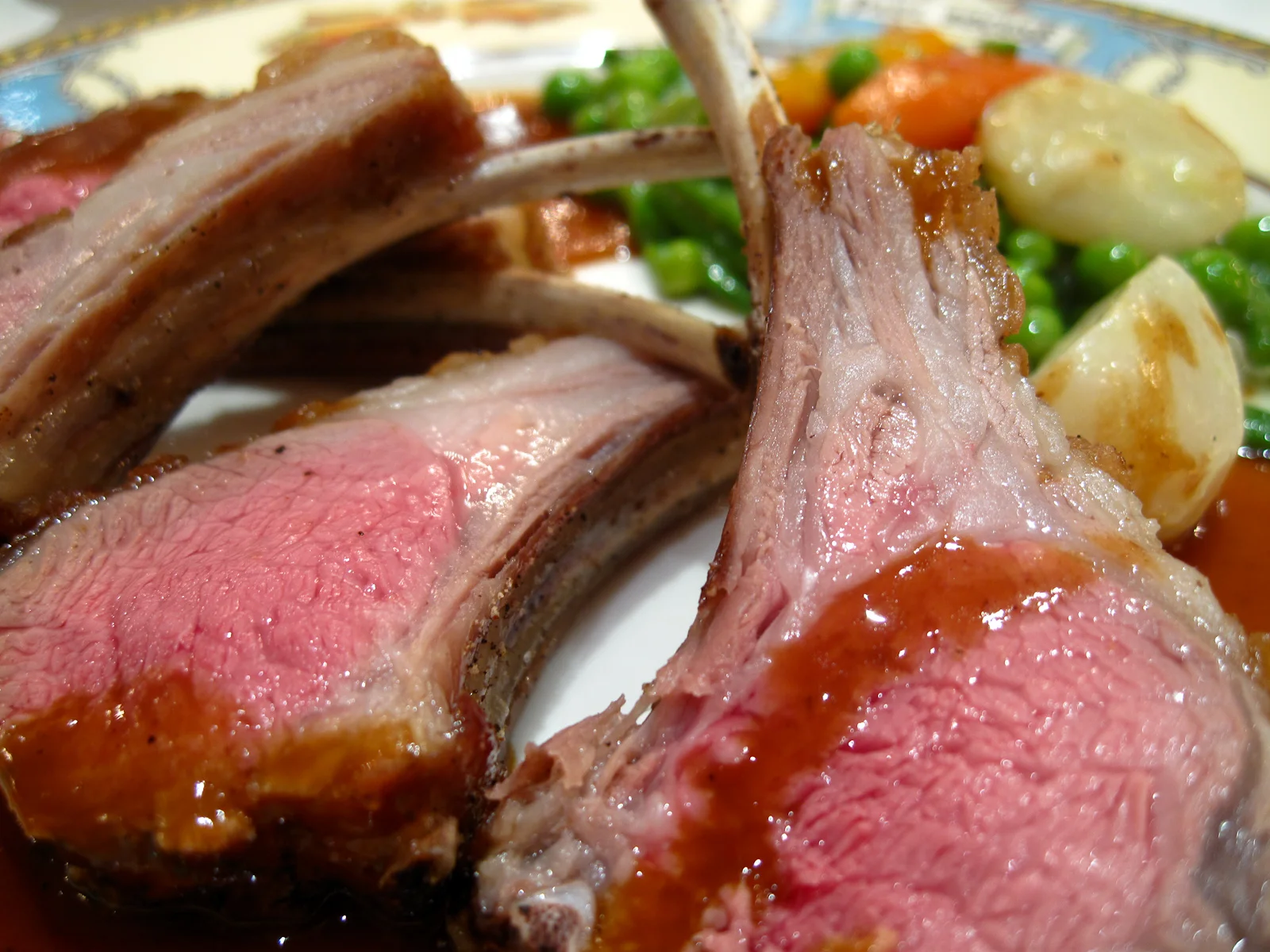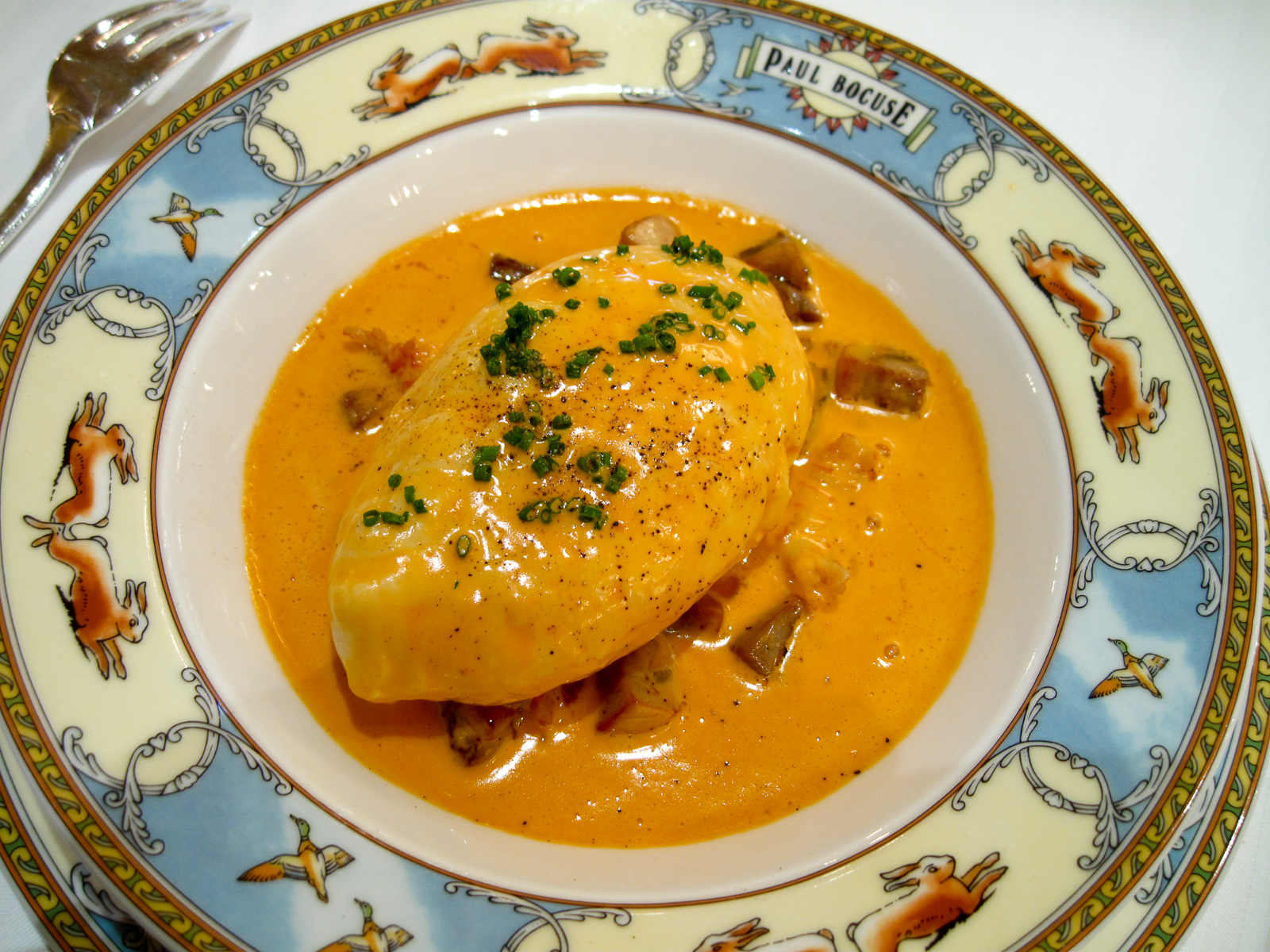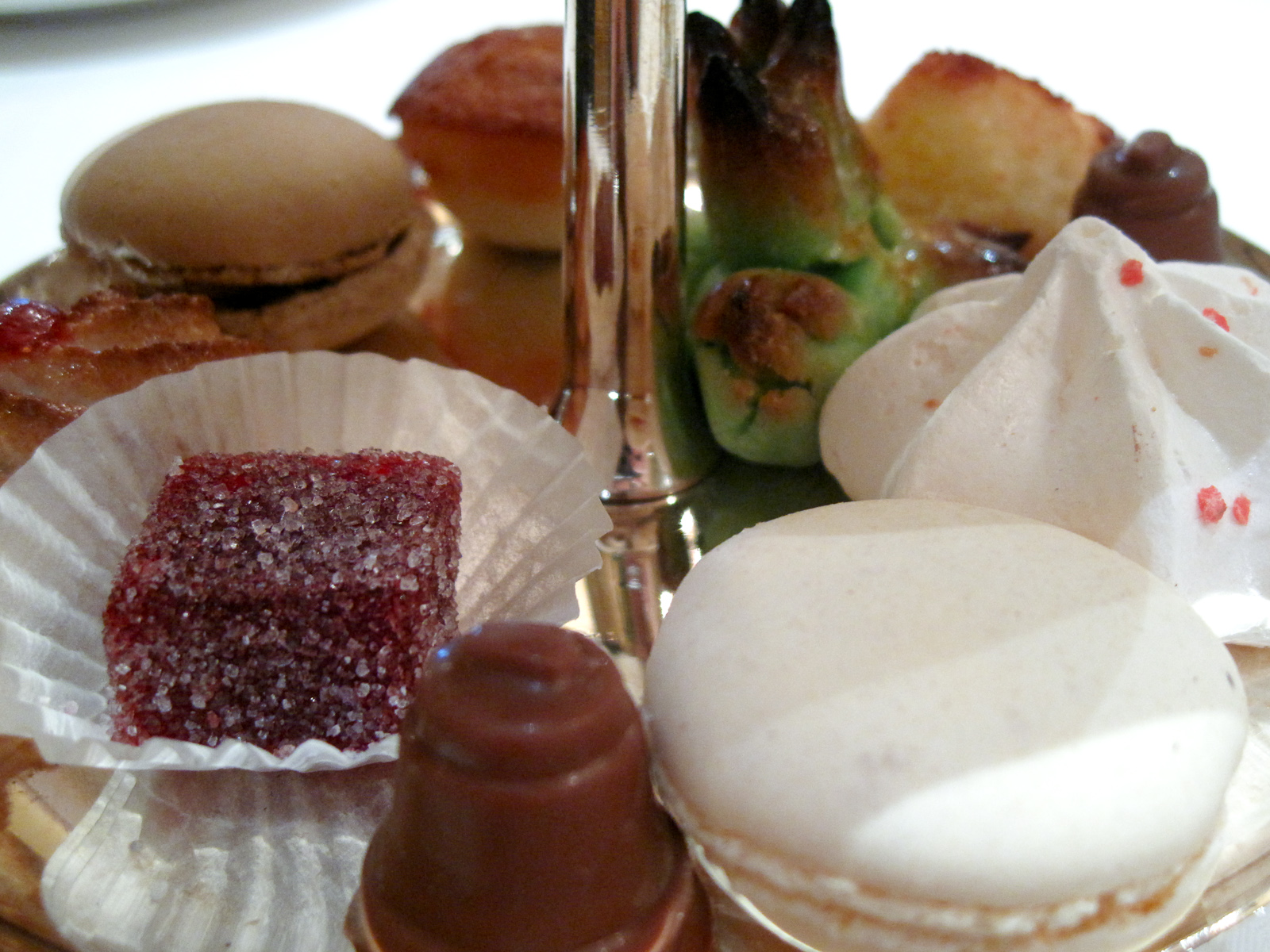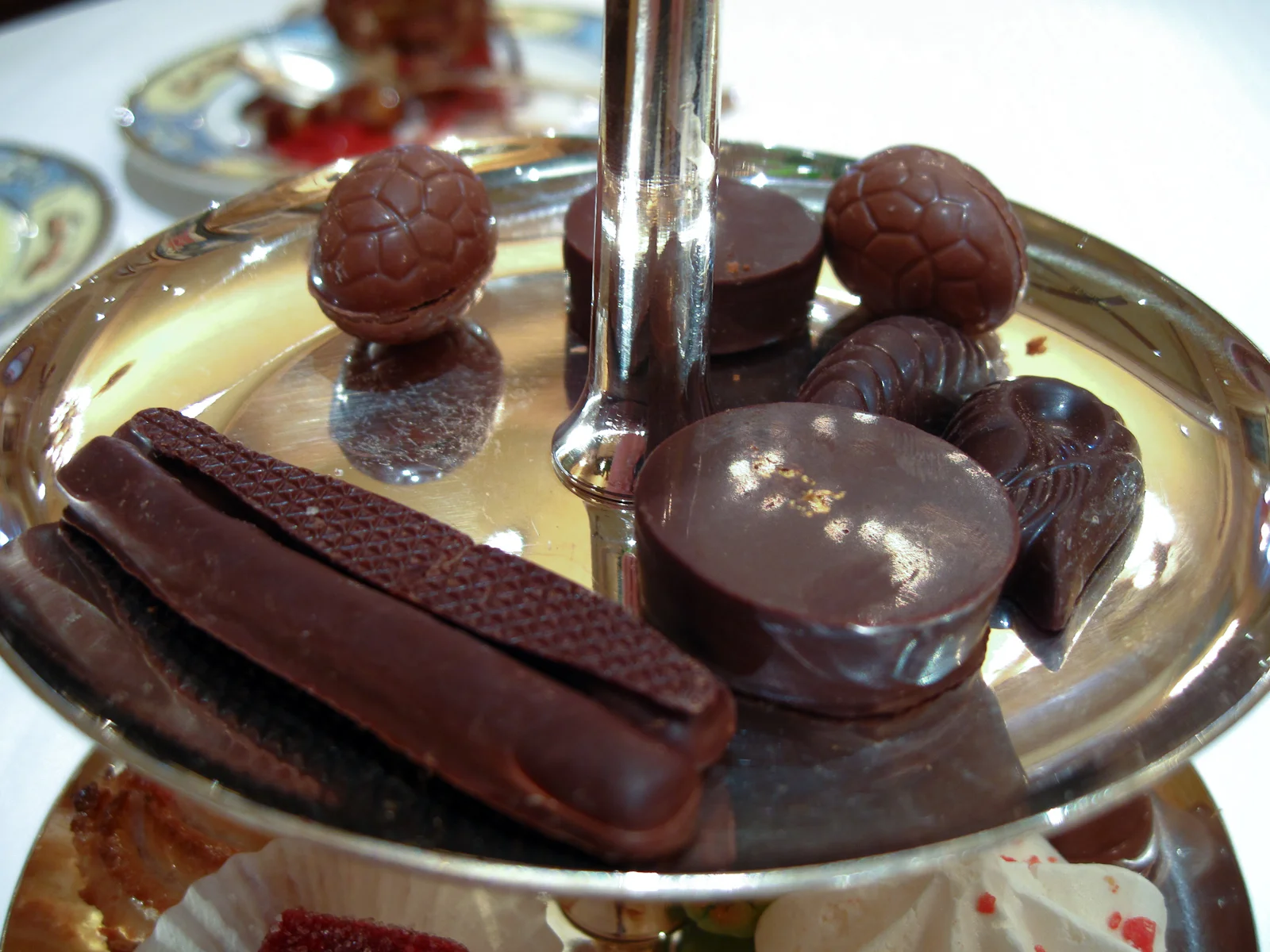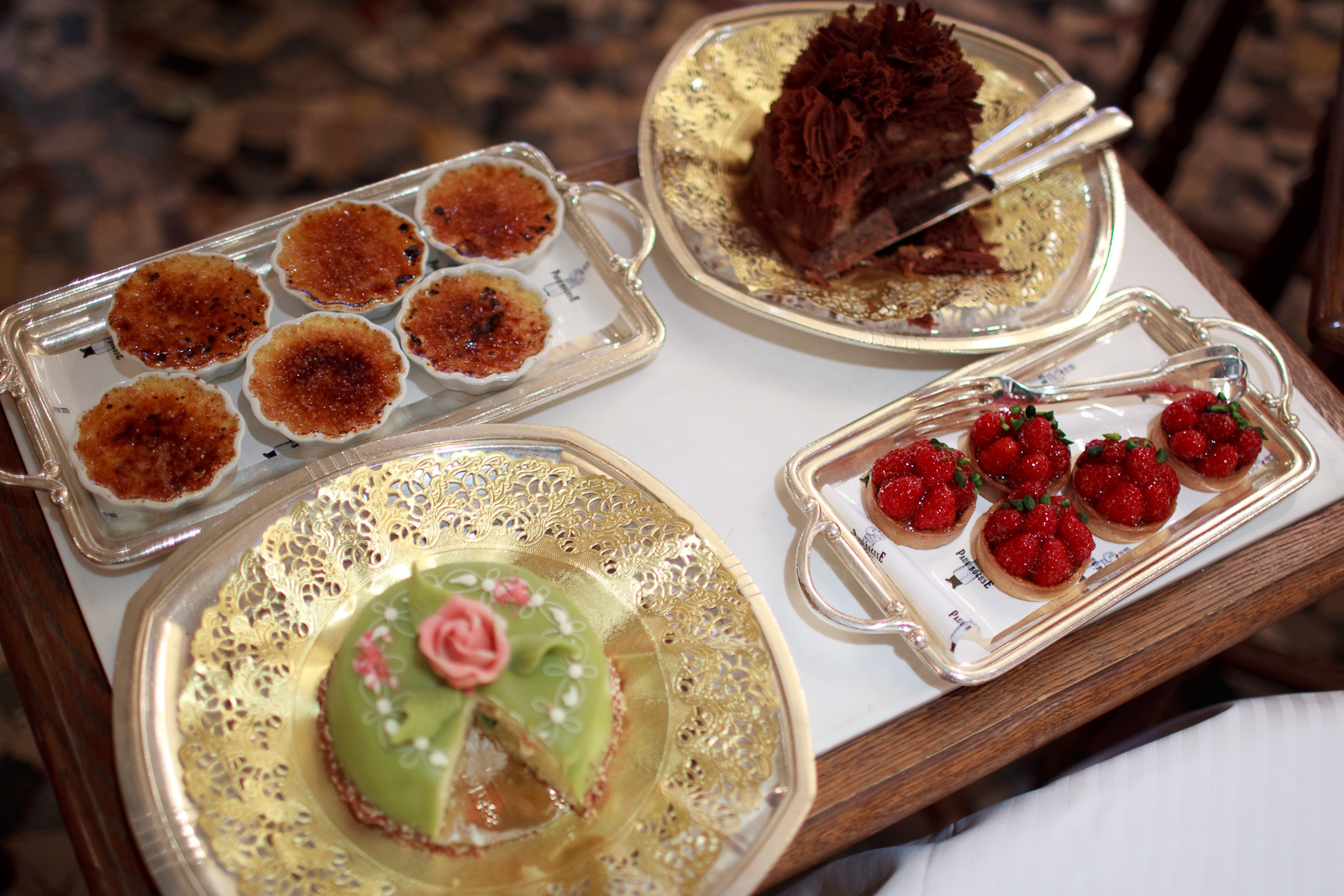Paul Bocuse
There are few chefs in France so universally known as Paul Bocuse. It could be because Chef Bocuse, a descendant from a family of chefs dating back to the late 1600s, is 83 years old and still works, though less frequently, in the kitchen. Or the fact that his namesake restaurant in Lyon has had three Michelin stars for over 43 years, making it the restaurant to have the longest period of consecutive years with such an honor. Even the state of California has proclaimed March 10 "Paul Bocuse Day." It's no question that Bocuse has an extensive and titled culinary history. What is interesting, however, is that after all these years most of his menu hasn't changed at all. But fortunately Bocuse continues to reproduce these classics with the same quality and passion that made them popular so many years ago. Before my visit to chez Bocuse, I had associated "classical French" with the ubiquitous inclusion of French mother sauces containing butter, crème, and wine reductions tasting so starchy and old-fashioned that they could not be exciting. At least that's what my experience had been. Even in my limited experience at culinary school, we were taught to use these sauces as a springboard for other more elaborate, more international creations to spark originality. But here with Paul Bocuse, the concepts of Spanish molecular gastronomy, California cuisine, and Japanese fusion are foreign. He sticks to the basics; no games. Bocuse only uses classic sauces because he believes it's the best way to highlight the flavors of meat, fish, and vegetables. He does it because it tastes the best. Period.
When I first arrived from the Lyon train station, I had to rub my eyes in disbelief: there stood Paul Bocuse, arms folded, posing perfectly in front of his restaurant. I jumped in front and took a picture. Then I noticed the entourage of politely frustrated Japanese photographers standing behind me. Oops ! The restaurant itself is perched on second floor of a larger complex, standing out in bright colors of red, green, and gold. It vaguely reminded me of the restaurant from Ratatouille some of the dock-side seafood restaurants I'd seen in New England, with its casual yet attractive colors. Letters above both the entrance and restaurant read "PAUL BOCUSE." I figured I was at the right place.
The wallpaper-lined main dining room had large arches which lets the light, as well as waiters, flow from room to room. The space felt very open and relaxed, much like eating in a comfortable hotel lobby with lots of niches and corners in which tables were nestled. My waiter handed me the over-sized menu and I began to read through the options. There was an extended tasting menu available; but it seemed like most of the dishes I wanted to try were only available à la carte. This is where the restaurant truly shined in making my experience customized and enjoyable: I was able to select all six of the dishes I wanted to try, and they were conformed to the portioning (and price) of the grand tasting.
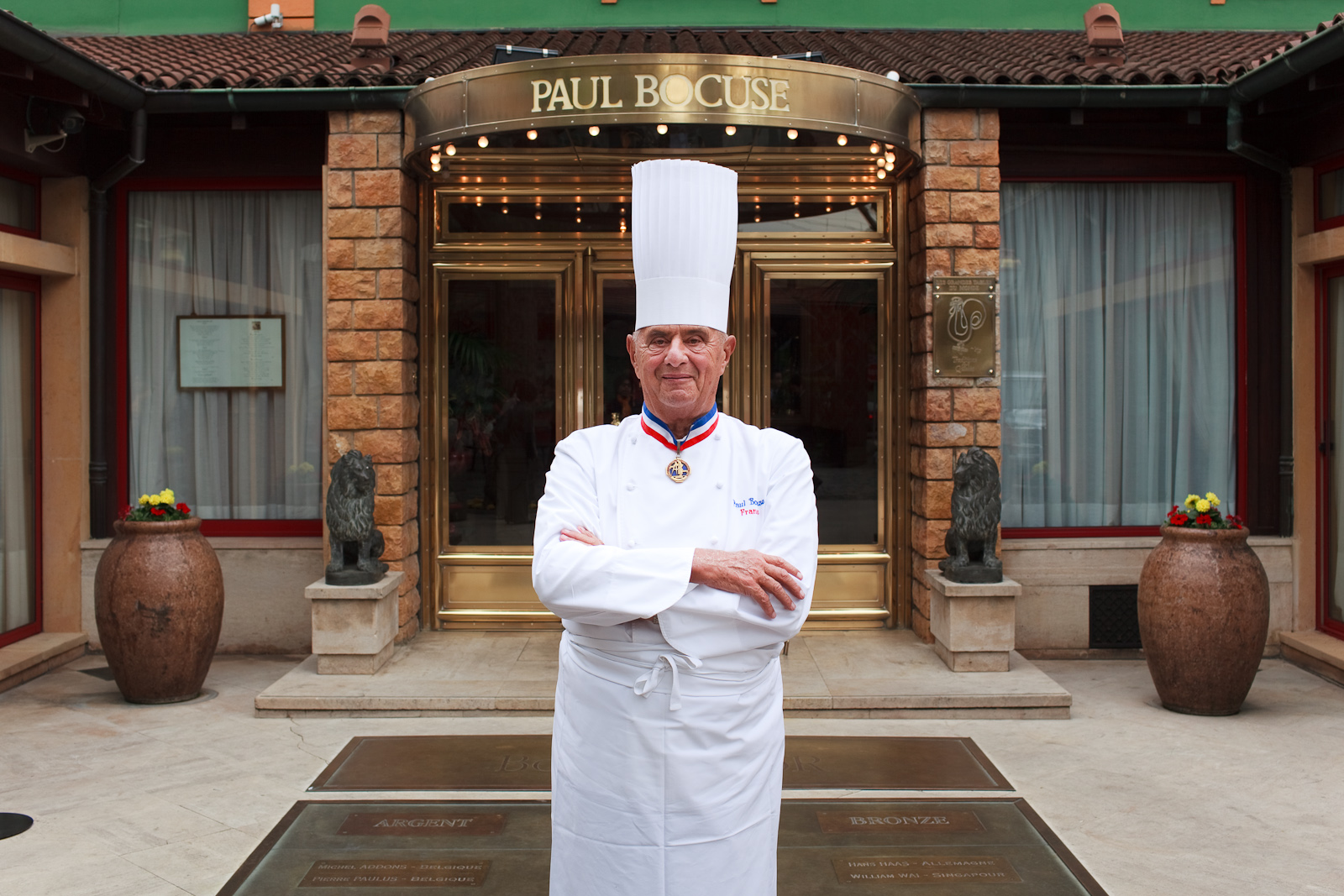

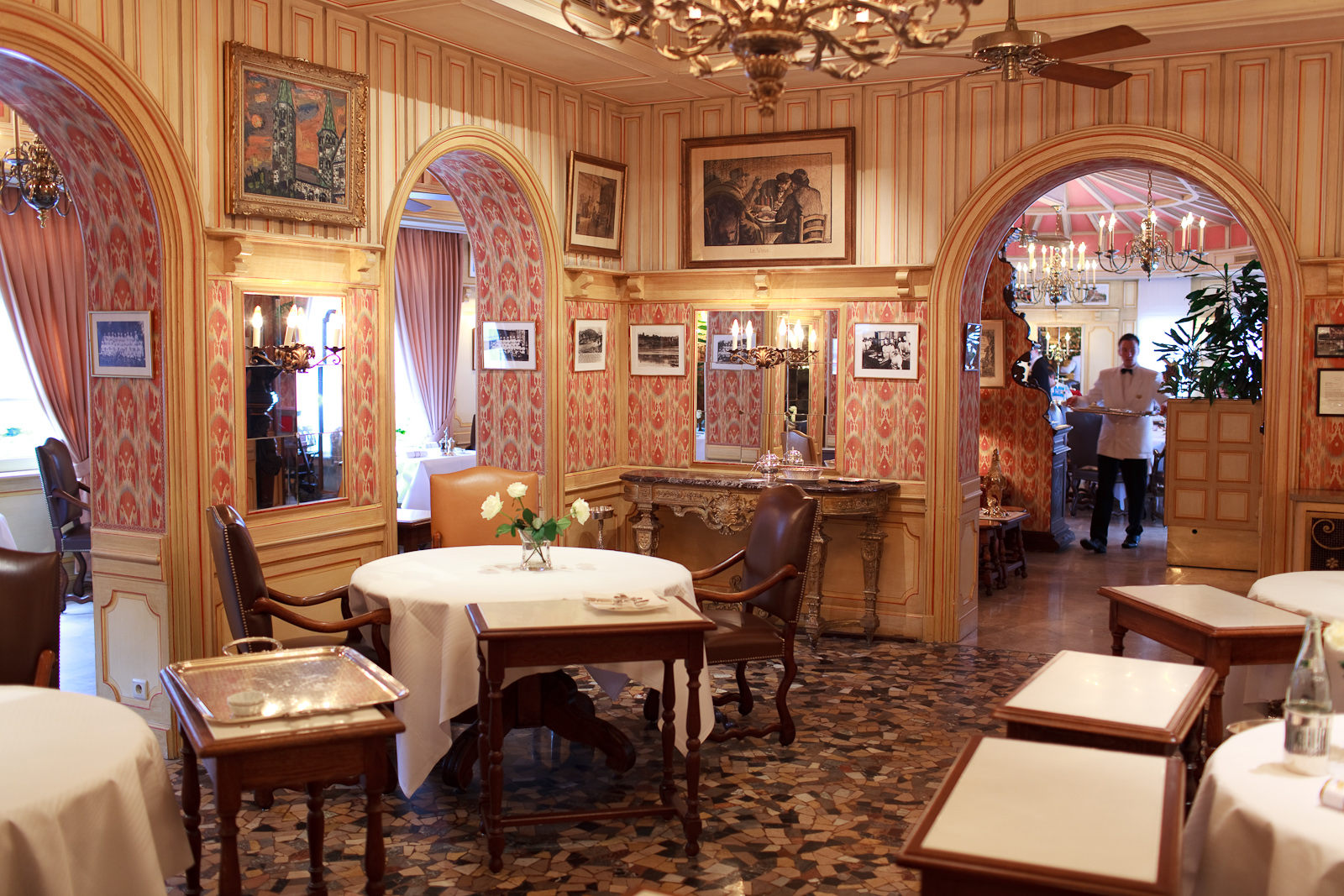
The amuse bouche started with a Paul Bocuse-sized gougère, suitable even for the likes of a certain Julien. The gougère was paired with a small cup of spring pea soup topped with crème fraîche -- and it was huge! Despite my thirty second photo shoot, it remained very hot at the first bite, even letting out a puff of steam. The flavor was of salty gruyère cheese with the light scent of toast. Even more full of flavor, however, was the thick pea soup which combined the flavor of rich butter with the crisp vegetal taste of spring peas. The soup was topped with chilled crème fraîche which seemed to mix with the hot liquid in my mouth to create a swirl of different temperatures. The crème fraîche was sprinkled with black truffle whose subtle presence I wouldn't have even noticed had it not been pointed out. Overall, the meal was off to nice start.
Soupe aux Petits Pois et Crème Fraîche
Seeing Maine lobster on a French menu is just about as rare as hearing a French sommelier compliment California wines. So imagine my shock and amazement the first time I saw my friend's photos on this dish. I've always found Main lobster to be the sweetest and most flavorful, particularly when served chilled, needing little saucing or garnish to enhance the flavor. The lobster was encircled with two rings of sauces. The outer ring of aged vinegar and butter, the inner of olive oil, salt, and fresh dill. The pattern of the sharp and acidic vinegar was beautiful, bold leaf-shaped "Y" patterns interlocking around the perimeter of the plate. The lobster sat atop a mayonnaise-bound salad of carrots, peas, turnip and string beans. Crowning the lobster and salad was a firm tomato en gelée, looking like an evil eye. Sort of scared me, to be honest. Aside from the tomato being cold and out of season, likely a decorative garnish than a flavor addition, the lobster's sweetness really came through balanced by the acidic vinegar, rich butter, and creamy mayonnaise. The real fun of this dish was combining the sweet main lobster with different combinations and quantities of the two sauces. The vegetable salad, while flavorful, seemed more of an afterthought.
Salade de Homard du Maine Printanière
After the lobster came a second chilled course, a foie gras pâte, served with truffles en gelée au Sauternes Antonin Carême. This particular sauternes was likely included as a tribute to one of the most famous French chefs of all time, rather than used for its particular flavor. The foie gras was full of savor: creamy, fatty, and smooth, the gelée, not so much. In fact, it was flavorless despite the presence of truffles. I actually didn't really understand what the truffles were doing in this dish aside from making it sound good on a menu. I found that the dense gelée prevented any scent or texture from escaping. The contrast between the chilled foie gras and the warm slices of toasted baguette, however, was very welcome. I left half of this plate untouched and conserved some space for the courses to come.
Soupe aux Truffes Noires V.G.E., plat créé pour l'Eysée en 1975
I suppose when a restaurant has been around and maintained three stars for nearly fifty years, the chance of multiple Presidents coming to dine is pretty high. Such was the case in 1975 when Bocuse, for then-President of France Valéry Giscard d’Estaing, created a custom-tailored black truffle soup. This soupe aux truffles noires V.G.E. comes in its own special bowl overflowing with puff pastry that locks in the heat and moisture. The first bite of this pastry made me question why whoever made this had not yet been knighted opened his own pâtisserie; the flaking texture was phenomenal, each "crack" into the surface shattering buttery flakes into the hot bouillon. After burrowing my way through the crispy surface, I reached a mid-layer of pastry that had been moistened by the steam below. Without a doubt the best part of this dish -- it had the flavor and temperature of the soup but maintained a frail and crispy texture rife with butter. By this point the health-conscious couple next to me had simply decapitated the soup, placing the puff pastry on a side plate, and went directly to the thin bouillon below. I didn’t want to burst her bubble; but if calorie counting was her thing, she was in the wrong country restaurant. The bouillon was a double consommé of beef with little strips of beef and shavings of black truffle. I found the soup itself a disappointment. While the flavor was pure and simple, it was boring. While that was likely the intention, I just didn't much care for it. The truffle shavings gave no flavor or scent, merely offering a different textural component. In the end I mostly ate the round croissant top and used the soup like a savory coffee for dipping. In doing so I saved some room; I was going to need it.
Rouget barbet en écailles de pommes de terre croustillantes
What came next was the highlight of the meal, rouget barbet en écailles de pommes de terre croustillantes, a thin filet of red mullet covered in potato scales. This course reminded me that butter does not equal bad. Butter gets a bad rap for its high cholesterol, saturated fats, and ubiquitous presence in French food. I would almost say that I've developed a sensitivity to butter from having lived in the US, a direct result of movements like California cuisine that de-emphasize butter usage and promote heart-healthy eating. But what Bocuse showed me was that butter, when used properly, is one of the best ways to strengthen and support a fish's natural flavor. Bocuse uses butter not for the sake of it, not because it's popular in French food, and not because he's a rebel. Rather he uses it deliberately because, quite simply, it tastes the best. Here it's presence was felt in both the crispy potato "scales" and the sauces pooling below the fish. The moist filet protected by its two skins stayed interesting with each bite until the very end, particularly because I could choose different combinations from the olive-leaf shaped combination of sauces below. This was delicious.
Served on the side of the rouget barbet was a small feuilleté aux anchois, a layered anchovy pastry puffed full of air and flavor. Just because this was served as a side did not mean it should be overlooked. The strong, slightly acidic anchovy helped to balance the rich butter from both its own pastry and from the rouget. Aside from the anchovy, once again, this pastry was phenomenal. If the pastry chef opened his own place, I would seriously consider moving to be closer to it. I made the mistake of cutting this in half with a knife which compressed the center to a vertical line on the plate -- this feuilleté is just too delicate for slicing.
Next came a very classic dish, quenelle de brochet sauce Nantua, incredibly fluffy pike quenelles floating on a bed of crayfish and a crayfish bisque. Despite the grand stature of the quenelle, I would not be surprised to learn that only 2-3 egg whites went into its making -- that's how weightless the texture was. This delicate poached mousseline of fish brought to mind the magically fluffy omelettes at the Park Hyatt hotel in Tokyo. But this was no breakfast. Since the quenelle was so airy, each hollow pocket soaked up the lavish flavor of crayfish and butter. The crayfish were chewy adding some textural variety; but a touch of something crunchy would have been a welcome addition.
It would be a euphemism to say that this was a lot of food; tasting portions, these were not. Sure glad I was still hungry for the carré d'agneau primeres côtes rôti à la fleur thym. This tender rack of lamb was cooked medium rare at the kitchen's recommendation, which meant that the cooking needed to be miraculously even and precise to prevent overcooking. Out of my four chops, one was overcooked and showed signs of dryness. The rest were juicy and tender. The thyme added a really pleasant and refined fragrance that made a natural pair with the meat. The vegetables -- peas, carrots, and turnip -- were lightly cooked in butter preserving the natural texture of the vegetables while highlighting their flavor with the salted butter. If France had soul food, this would be it: simple, satisfying, and filling. To the side was a potato gratin which seemed almost like an afterthought, albeit a very rich one. The cheese seemed slide around on the surface rather than infusing throughout the casserole.
Des fromages
My waiter wheeled the cheese cart from the table across in my direction with a devious smile: he knew he was up to no good. The cheese selection was rather standard including the all-stars Fourme d'Ambert, Crottin, Pouligny Saint Pierre, Comte agé 18-mois, and Tomme de Brebis. There was some fresh local cheese served in a small glass jar on one of the other carts that I'd never had before, so I opted for that. Despite its white, yogurt-like appearance its flavor was anything but innocuous: sour, bitter, and vegetal. The waiter returned with some sugar which helped, but I took this as a cultural item that just wasn't for me.
Next came the dessert carts. Three carts in total. My assumption is this excessive quantity of sweets is a relic of the past where diners sought to leave a fine dining establishment not only sated, but stuffed, in order to have maximized their experience. The carts included a vast assortment of cakes, tarts, sorbets, and meringues. At this point I considered one of everything skipping dessert but my two hour train from Paris required I at least try some of them. I compromised with myself electing the two of the most classic: Île Flotante and Baba au Rhum. The "floating island" was a small dollop of meringue served with caramel. It tasted similar to a cold soufflé; interesting, but two bites was enough. The baba au rhum was inundated with rum meaning while I didn't order alcohol with this meal, my alertness would be severely altered whether I liked it or not. The texture of the baba was unbelievably moist; I wouldn't have been surprised to learn that a single cake houses half a cup of rum inside.
A two-layered plate of petits fours was left on the table containing both chocolates and small French delicacies such as pâte aux fruits, macarons, meringues, tuiles, and madeleines. The fruit jelly was the most welcome as its bright flavor put a happy end to a substantial meal.
From an educational perspective, this was an excellent meal. It was a glimpse into France's past. This is the first restaurant I'd been to where the dishes were unabashedly traditional but the flavors exciting. It's a meal that showed me that butter can be marvelous when used properly. After having eaten here, it's now easier to see what other less successful dishes attempted to be with their use of classical components; but failed to become for lack of flavor.
That being said, I think once was enough for the next few years. The food, though educational, was very heavy and its lack of changes makes it unlikely to maintain the same level of excitement the second time. I will, however, continue to refer back to Bocuse as an example of classic, and delicious, fine dining for much longer. And for those who have not been before, it's an important relic of France's culinary past that begs to be explored.






